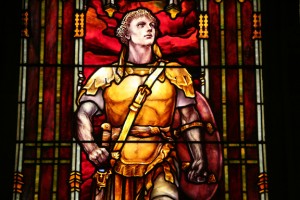 Our 105-year-old building has a spectacular stained glass window from the renowned Tiffany Studio of New York City. How did PUMC acquire a window with such an unusual subject?
Our 105-year-old building has a spectacular stained glass window from the renowned Tiffany Studio of New York City. How did PUMC acquire a window with such an unusual subject?
It was the gift of the family of William Edward “Eddie” Durrell, a Methodist preacher’s son who – while he attended Princeton University – made PUMC his church home. Eddie graduated in 1889 and two years later met an untimely death in Rome, perhaps because of an aneurism. His father (Reverend Edward Hicks Durrell, who had invested in cranbury bogs in South Jersey) and his brothers — grateful for what the church had offered Eddie – commissioned the window symbolizing the triumph of good conquering evil.
Most images show St. George on a horse in the act of spearing the dragon. This memorial window shows an athletic young man, sword sheathed, as if to say “the battle is over, he fought the good fight, he conquered evil.”
PUMC has many stained glass treasures, including the Corson Chapel windows and the “Let the children come to me” mural in the Sanford Davis room. In the sanctuary, our windows of the four Gospel writers can also be found in the cathedral in Cologne Germany. The windows with abstract and symbolic designs are beautiful.
The St. George window, by the studio of Louis Comfort Tiffany, is the most valuable of our treasures. As Pam Hersh said in her column, it is ‘a spectacular piece of art in a surprising space.” Tiffany revolutionized stained glass art. While the Europeans fired paint directly on the glass, effectively dulling its natural transparency, Tiffany managed to create vivid color in the glass itself, and he etched details with acid instead of using paint. He layered multiple panels to create unparalleled clarity, and the windows shimmered on both sides.
Tiffany also redefined the use of leading. Traditionally, it was purely functional and thought of as little more than support for the glass. As a result, the lead tended to distract from, rather than enhance, the artistic vision. That is until Tiffany developed new techniques that allowed the metal to become an integral part of the design, and the once clunky lead lines were transformed into elaborate outlines for things like tree branches and butterfly wings — or, in this instance, cathedral windows.
The only other Tiffany windows in Princeton are on campus at Alexander Hall and Jadwin Hall. The best view of “Saint George and the Dragon” is from the back pew of the balcony. Look for the iridescent scales on the dragon (Tiffany patented that method as @Favrile), and also note the Tiffany signature on the right.
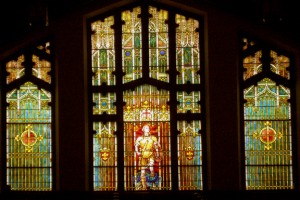
Source: Ruth Woodward in A Journey of Faith for One Hundred Fifty Years: A History of Princeton United Methodist Church and Elizabeth E. Evitts, Baltimore Magazine.
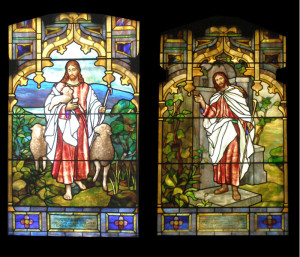

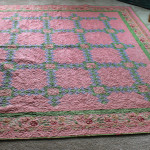
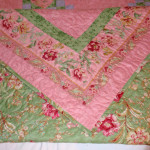

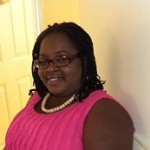 Originally native to Ghana, West Africa, Phoebe lived in Paterson, NJ until seminary education brought her to Princeton. Personally devoted to the contemplative arts, creativity and spirituality, she feels called vocationally to the ministry of Christian Education and is currently
Originally native to Ghana, West Africa, Phoebe lived in Paterson, NJ until seminary education brought her to Princeton. Personally devoted to the contemplative arts, creativity and spirituality, she feels called vocationally to the ministry of Christian Education and is currently 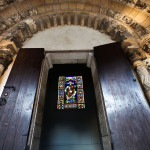
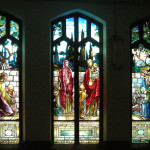
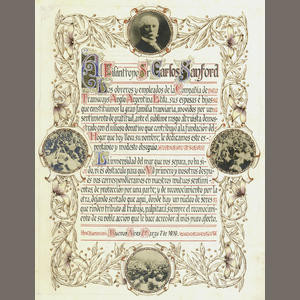 The Sanford Davis room at Princeton United Methodist Church hosts everything from after-church coffees to community meetings. Who was it named after, anyway? Charles H. Sanford made quite a lot of money — $1 million was a fortune in Victorian times — and did good things with it. The book, pictured above, is a
The Sanford Davis room at Princeton United Methodist Church hosts everything from after-church coffees to community meetings. Who was it named after, anyway? Charles H. Sanford made quite a lot of money — $1 million was a fortune in Victorian times — and did good things with it. The book, pictured above, is a  Our 105-year-old building has a spectacular stained glass window from the renowned Tiffany Studio of New York City. How did PUMC acquire a window with such an unusual subject?
Our 105-year-old building has a spectacular stained glass window from the renowned Tiffany Studio of New York City. How did PUMC acquire a window with such an unusual subject?